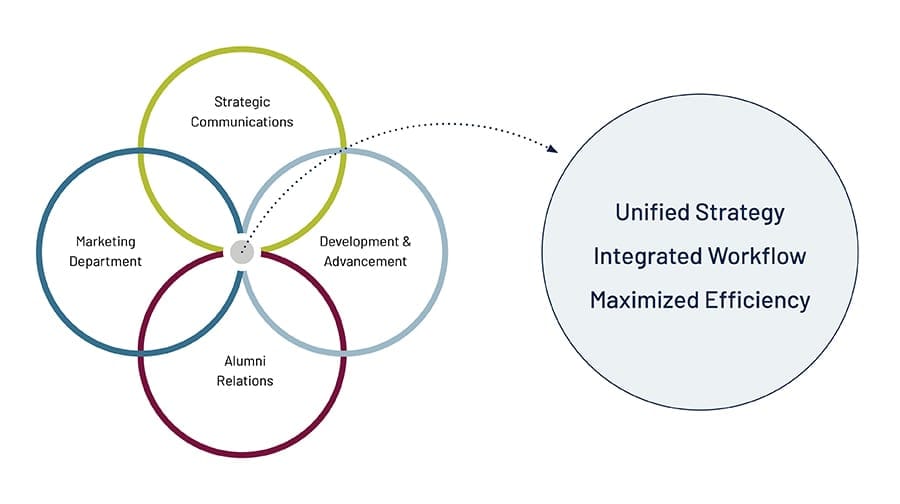If silos within your institution hinder you from accomplishing your communication goals, you are not alone. Higher education has been bound by hierarchical structures for centuries. But siloed higher ed marketing is not effective, and colleges and universities understand that a cohesive brand message must be communicated throughout the student life cycle, from prospect to alumnus.
It’s time for a cultural shift in higher ed marketing. Tear down your silos and develop a culture of collaboration. You’ll gain plenty of efficiencies, drive consistency into your brand positioning, and be better aligned with institutional priorities.
Why marketing silos must come down
Marketing silos in higher education negatively affect resource management and outcomes, both of which have an impact on return on investment (ROI). And, in an age when higher ed marketing must empirically prove ROI, silos make the job difficult.
When marketing is siloed in higher ed, work often becomes redundant and costs increase. That’s because in a siloed environment, teams work independently, never talking to each other about campaigns, channel strategy or even business goals. But when marketing works collaboratively across departments, campuses or schools, redundancy can be eliminated. This leads to effective development of a unified content strategy, integrated workflow and better use of marketing channels. Those all lead to cost savings.

Cost savings are not the only benefit of taking down marketing silos. Achieving important goals, like increasing enrollment and cultivating engaged alumni, require a unified marketing perspective that is integrated across the student experience. When silos exist, so do mixed messages – which detract from a consistent brand experience.
How to eliminate marketing silos
Key to eliminating marketing silos is to make sure that every marketer, recruiter, development officer and alumni liaison fully understands the student journey from prospect to alumnus. Doing so helps disparate teams build a collaborative foundation and understand how to look at the institution from the perspective of the student.
A collaborative team can then tackle the questions about how the brand can be used throughout the student journey, including:
- What channels to use to engage with students throughout their journey
- How to enhance the brand across paid, earned and owned channels
- How to influence the social sharing process
With a better understanding of messaging needs across the student journey, you will be better aligned to understand content needs and develop marketing campaigns that can effectively attract better-qualified prospects, increase enrollment and boost alumni engagement.
As competition intensifies for brand visibility, a synergistic marketing approach that efficiently encompasses recruiting, development and alumni relations is necessary. That type of approach isn’t possible if your marketing teams work in silos. So, break down the silos and develop a marketing culture of collaboration.

